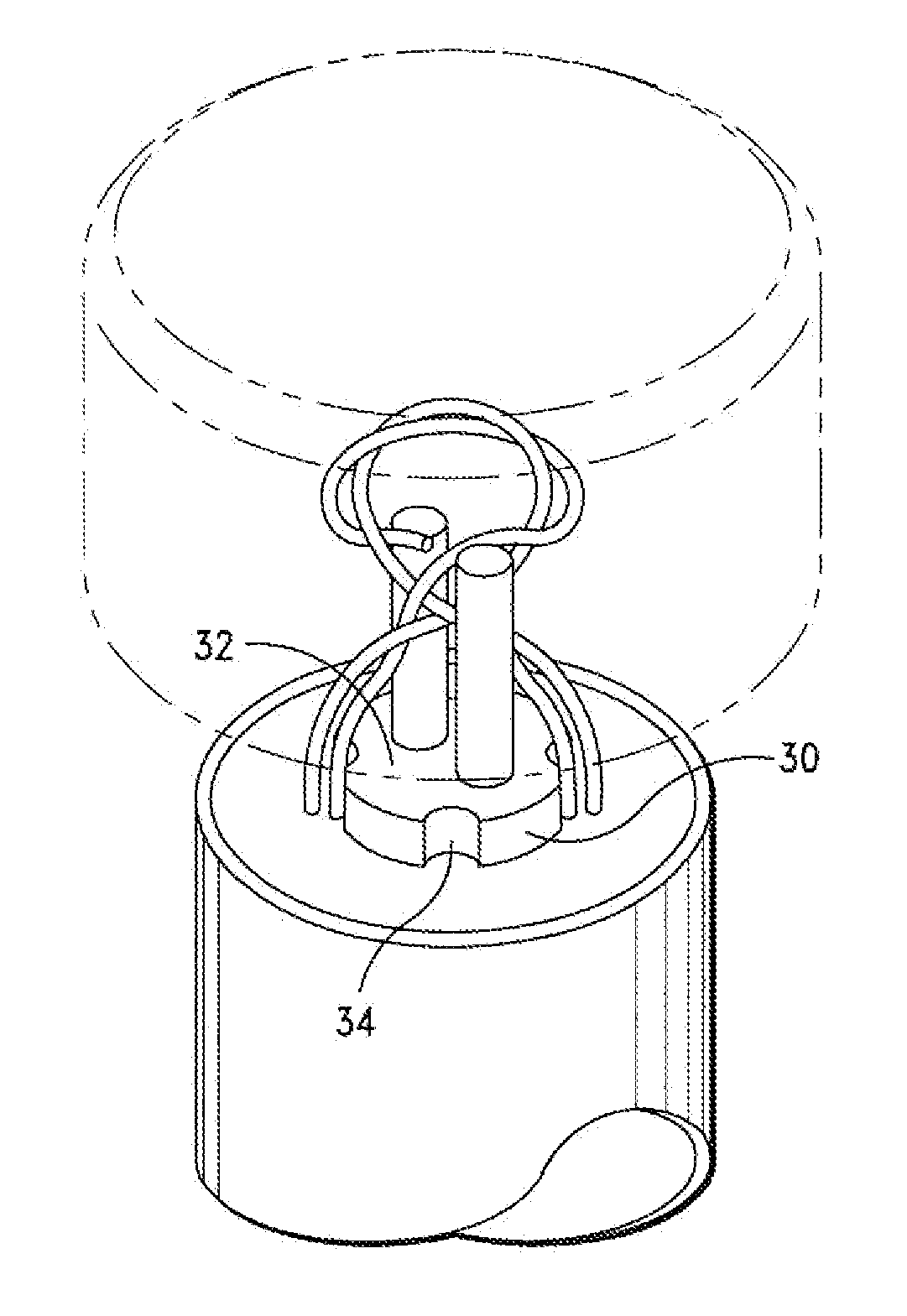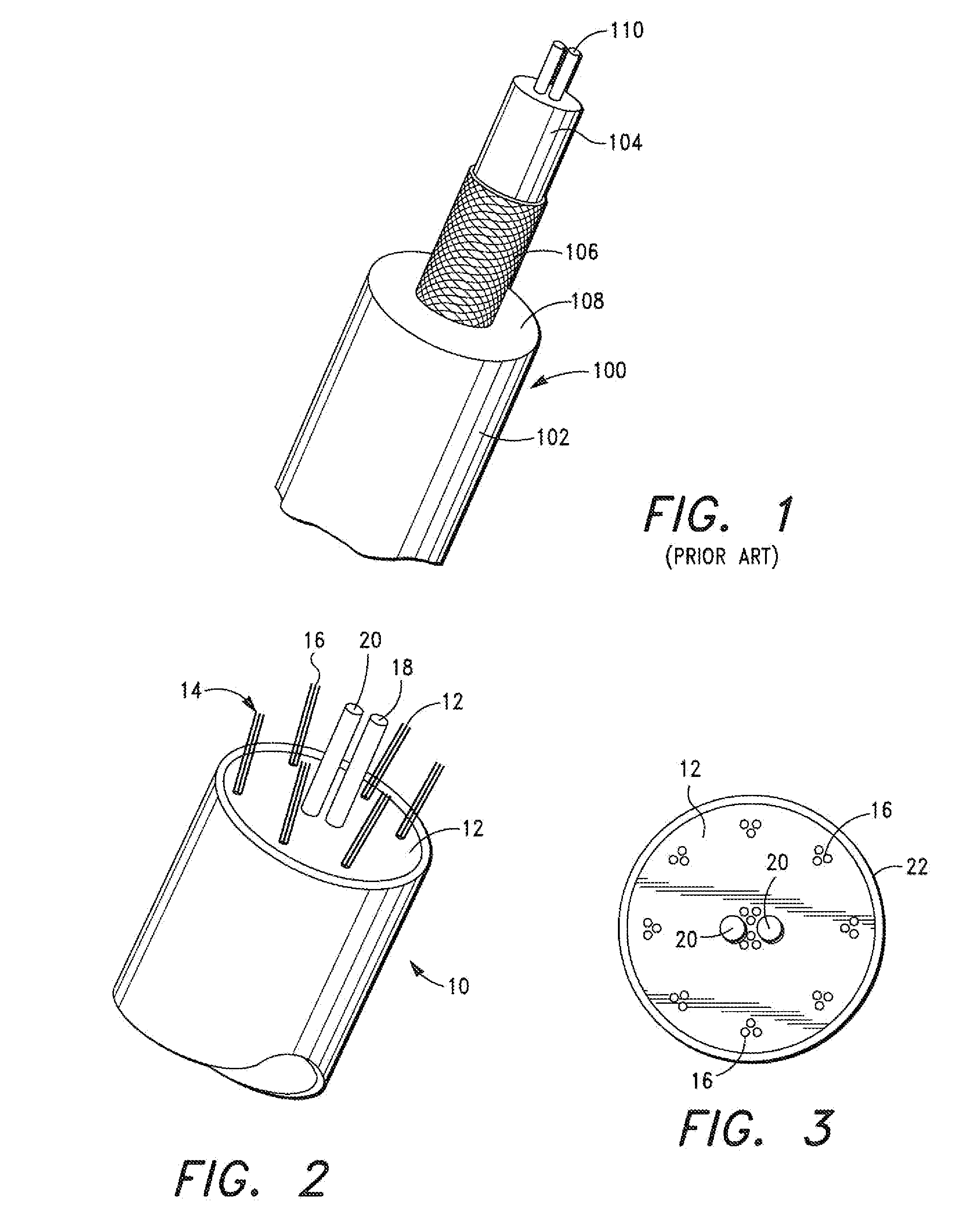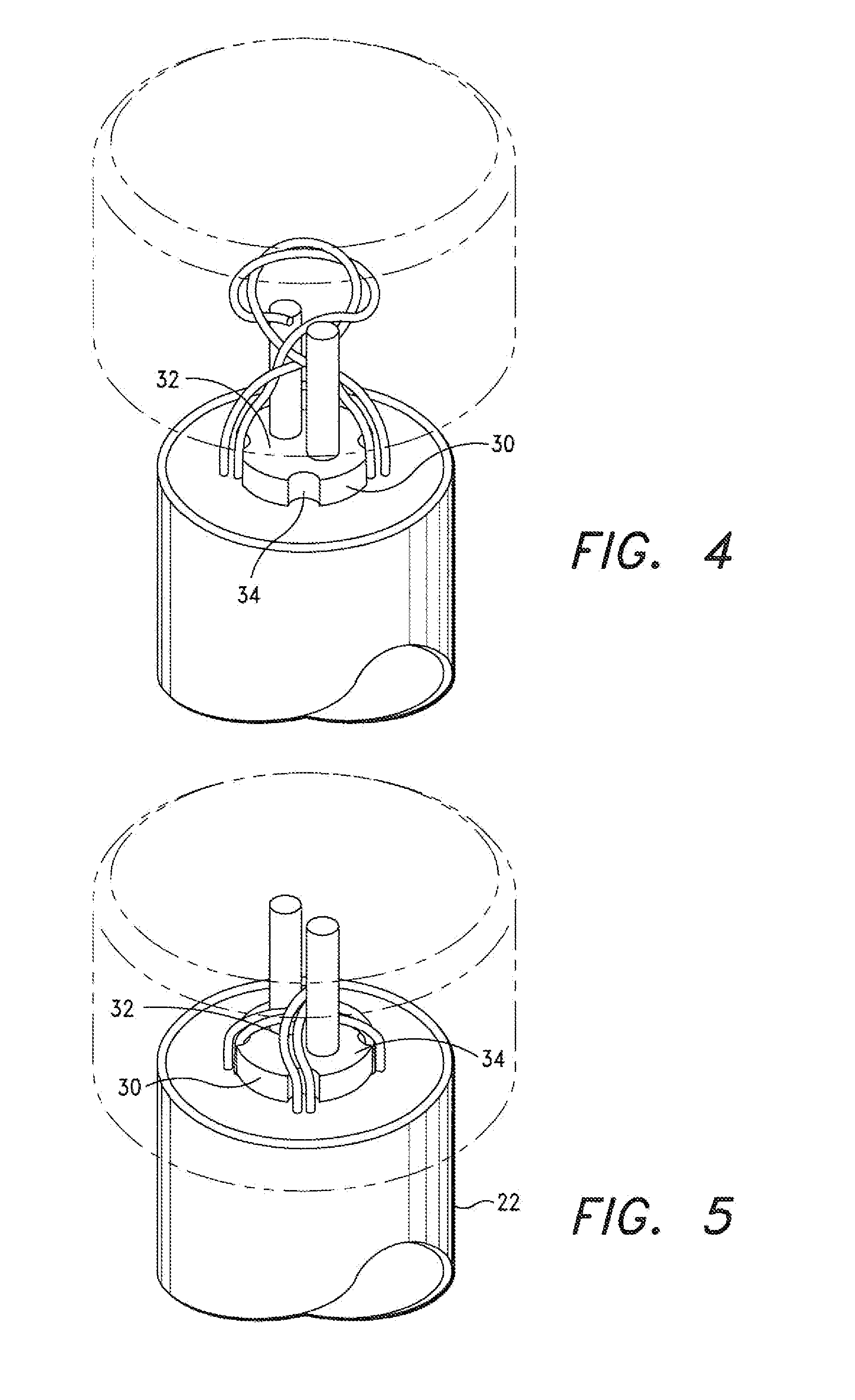Electrically conductive buoyant cable
a technology of buoyant cables and conductive materials, applied in the direction of floating cables, insulated conductors, cables, etc., can solve the problems of cable reaching its maximum value, affecting the normal performance of cleaning devices, and affecting the service life of cables, etc., to achieve good buoyancy, resist higher tensioning forces, and be flexible.
- Summary
- Abstract
- Description
- Claims
- Application Information
AI Technical Summary
Benefits of technology
Problems solved by technology
Method used
Image
Examples
Embodiment Construction
[0046]In order to appreciate the invention herein, one must appreciate the need in the art as set forth in the Background. Most importantly, the structure of the instant invention herein resolves the long felt need of preventing cable delamination. The structure of the instant invention allows the cable to bend and flex in all ways common and desirable for a cable of this type, while retaining structural integrity.
[0047]With particular reference to FIGS. 2-7, the instant invention will now be described. FIGS. 2 and 3 show the basic structure of the electrically conductive buoyant cable in accordance with this invention generally denoted by the numeral 10. The cable is multiple layer cable, in which various members make up the layers. As shown, the cable includes a core member 12. The core member 12 is a filler layer and made from a foamed elastomer.
[0048]A reinforcing member 14 is coaxial with the core member 12. The reinforcing member 14 is within the core member 12 as shown and in...
PUM
| Property | Measurement | Unit |
|---|---|---|
| electrically conductive | aaaaa | aaaaa |
| electrical conductive | aaaaa | aaaaa |
| relative density | aaaaa | aaaaa |
Abstract
Description
Claims
Application Information
 Login to View More
Login to View More - R&D
- Intellectual Property
- Life Sciences
- Materials
- Tech Scout
- Unparalleled Data Quality
- Higher Quality Content
- 60% Fewer Hallucinations
Browse by: Latest US Patents, China's latest patents, Technical Efficacy Thesaurus, Application Domain, Technology Topic, Popular Technical Reports.
© 2025 PatSnap. All rights reserved.Legal|Privacy policy|Modern Slavery Act Transparency Statement|Sitemap|About US| Contact US: help@patsnap.com



